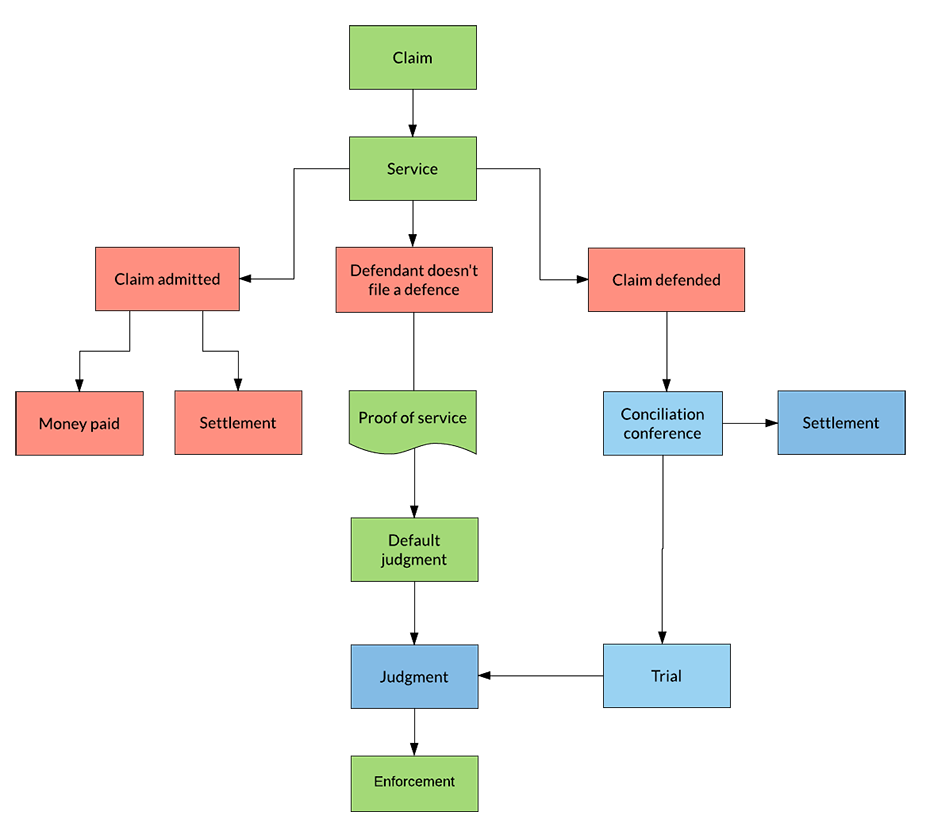Minor civil claim

The flowchart explains what happens after you file a civil claim form for a minor claim at the court registry and then serve the document you have failed on the defendant.
There are the three possibilities:
1. The defendant admits the claim and pays the money they owe you or they offer a settlement.
2. The defendant ignores the claim: they neither admit it or file a defence. In this case you can file a default judgement attaching your original claim and affidavit of service (proof of service). After judgement you may take out enforcement actions: warrant or garnishee order.
3. The defendant files a defence. In this case the matter generally will go to a conciliation conference and a conciliator may be involved to help you negotiate a compromise that both you and the defendant agreed on (settlement). If you can’t settle, the Magistrate will then proceed to hear your case at a trial. If you are successful and obtain judgment you may take out enforcement actions: warrant or garnishee order.